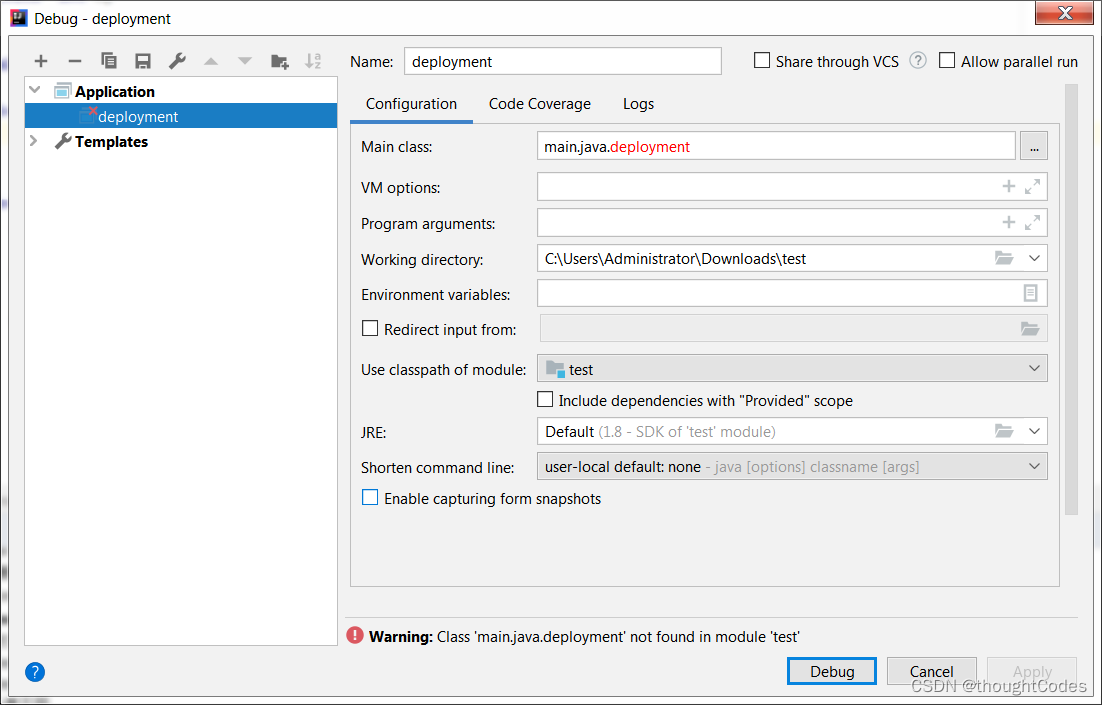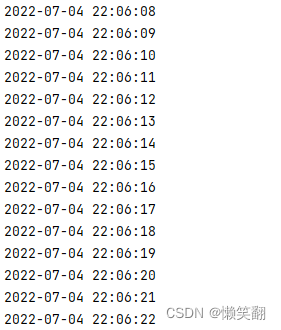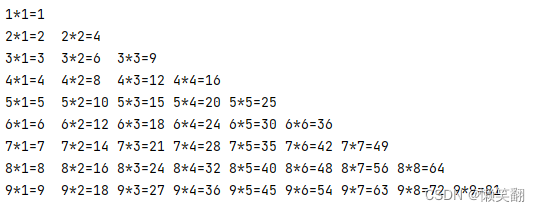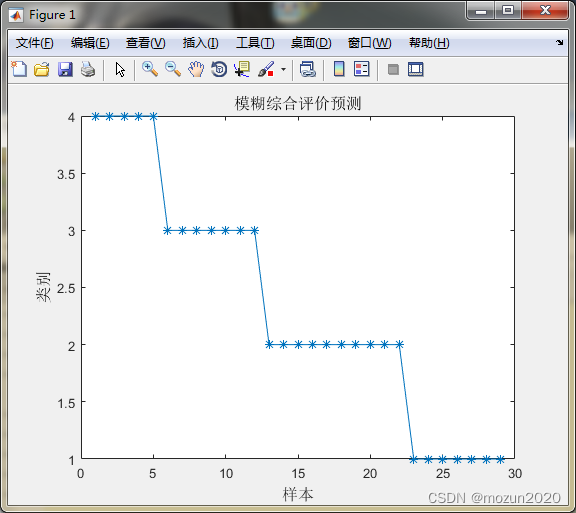当前位置:网站首页>Pytorch entry record
Pytorch entry record
2022-07-05 08:36:00 【Muyu orange wind 24】
This is my study b standing up Main small mound Pytorch Record after the introduction video , link https://www.bilibili.com/video/BV1hE411t7RN?p=1
One 、Pytorch Load data
Reading data mainly involves two classes :Dataset And DataLoader
1.Dataset
First, you can inherit torch.utils.data Medium Dataset Class loads its own dataset
from pytorch The official source code can be seen , It mainly includes three methods __init__、__getitem__ and __len__
__init__ The purpose of is to get a containing data and labels list, Each element can find the picture position and its corresponding label .
__getitem__ Method to obtain the image pixel matrix and label of each element , return img and label.
__len__ The method is to get the length of the data .
class MyData(Dataset):
def __init__(self, root_dir, image_dir, label_dir, transform):
self.root_dir = root_dir
self.image_dir = image_dir
self.label_dir = label_dir
self.label_path = os.path.join(self.root_dir, self.label_dir)
self.image_path = os.path.join(self.root_dir, self.image_dir)
self.image_list = os.listdir(self.image_path)
self.label_list = os.listdir(self.label_path)
self.transform = transform
# because label and Image Same file name , Do the same sort , It can guarantee the extracted data and label It's one-to-one
self.image_list.sort()
self.label_list.sort()
def __getitem__(self, idx):
img_name = self.image_list[idx]
label_name = self.label_list[idx]
img_item_path = os.path.join(self.root_dir, self.image_dir, img_name)
label_item_path = os.path.join(self.root_dir, self.label_dir, label_name)
img = Image.open(img_item_path)
with open(label_item_path, 'r') as f:
label = f.readline()
# img = np.array(img)
img = self.transform(img)
sample = {'img': img, 'label': label}
return sample
def __len__(self):
assert len(self.image_list) == len(self.label_list)
return len(self.image_list)secondly , It can be used torchvision.dataset Load existing datasets
torchvision.dataset Contains many data sets , for example COCO、CIFAR、MNIST etc.
With CIFAR10 For example , Using this dataset requires 5 Parameters
root: Is where the data set is stored .
train: yes bool type ,True Indicates that the data set is a training set ,False Expressed as a test set .
transform: Transform the picture , For example, cutting 、 rotate 、 Change size or become tensor data type (.ToTensor) etc.
download:bool type ,True Indicates that the data set needs to be downloaded , General choice True
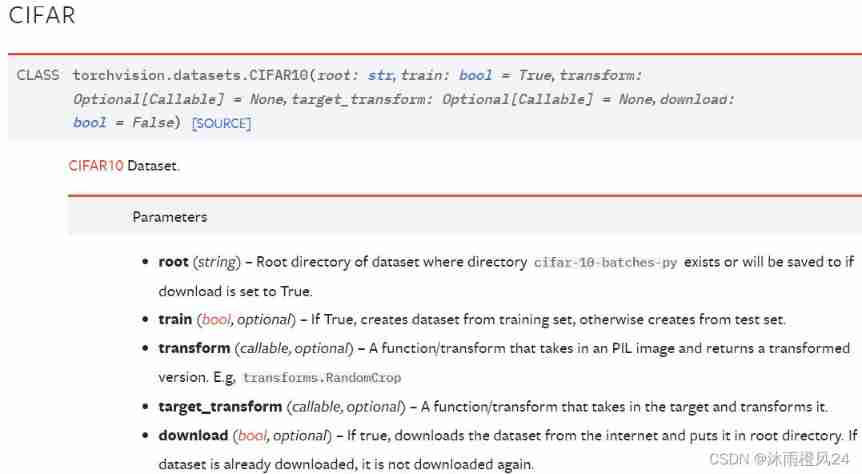
dataset_transform = torchvision.transforms.Compose([
torchvision.transforms.ToTensor()
])
train_set = torchvision.datasets.CIFAR10(root="./dataset", train=True, transform=dataset_transform, download=True)
test_set = torchvision.datasets.CIFAR10(root="./dataset", train=False, transform=dataset_transform, download=True)
torch.utils.tensorboard Data visualization
import torchvision
from torch.utils.tensorboard import SummaryWriter
dataset_transform = torchvision.transforms.Compose([
torchvision.transforms.ToTensor()
])
test_set = torchvision.datasets.CIFAR10(root="./dataset", train=False, transform=dataset_transform, download=True)
writer = SummaryWriter("CIFAR_Test")
for i in range(10):
img, target = test_set[i]
writer.add_image("test_set", img, i)
writer.close()stay tensorboard You can see CIFAR10 Before the test set 10 A picture , Here's the picture :

2.Dataloader
When the dataset is ready , In general use torch.utils.data.DataLoader Load data

It can be seen from official documents ,Dataloader The use of classes requires many parameters , The most common one is :
dataset: Ready data sets
batch—size: The number of samples captured in a single training
shuffle: At every epoch Whether to disturb the order of capturing pictures , The default is False
num_workers: Use multiprocess loading ,0 Indicates that the main process is used to load
drop_last: There is not enough data to grab for the last time batch_size Discard or not
from torch.utils.data import DataLoader
test_loader = DataLoader(dataset=test_data, batch_size=64, shuffle=True, num_workers=0, drop_last=True)
Two 、 Neural network model construction nn.Module
1. Convolution layer

import torch
from torch import nn
from torch.nn import Conv2d
class Model(nn.Module):
def __init__(self):
super(Model, self).__init__()
self.conv1 = Conv2d(in_channels=3, out_channels=6, kernel_size=3, stride=1, padding=0)
def forward(self, x):
x = self.conv1(x)
return xin_channels: Enter the number of channels
out_channels: Number of output channels
kernel_size: Convolution kernel size
stride: The convolution kernel moves the step size
padding: Add a boundary to the input matrix padding_mode:‘zeros’ Boundary complement 0
bias: Whether to add offset
2. Pooling layer
Take the largest pool

ceil_mode:True Similar to rounding up , The remaining elements of the boundary are also maximized ;False The remaining elements of the boundary will be discarded , Take code as an example :
import torch
input = torch.tensor([[1,2,3,4,5],
[4,5,6,7,8],
[7,8,9,11,2],
[2,4,6,3,2],
[7,3,5,2,1]],dtype=torch.float32)
input = torch.reshape(input,(1,1,5,5))
output = torch.nn.MaxPool2d(kernel_size=2,ceil_mode=True)
output = output(input)
print(output)When set to True When the output is :

When set to False When the output is :
![]()
ps: The step size is generally equal to the convolution kernel size by default
3. Nonlinear activation function
Commonly used functions are Sigmoid function 、Relu Functions, etc
class Model(nn.Module):
def __init__(self):
super(Model, self).__init__()
self.relu1 = ReLU()
self.sigmoid1 = Sigmoid()
def forward(self, input):
output = self.sigmoid1(input)
#output = self.relu1(input)
return output4. Linear layer and other layers
Other layers such as Normalization layer 、Dropout Layers, etc. are not introduced in detail , The specific use method can still be queried through official documents .
The linear layer is generally expressed as ![]()
, Each neuron is connected to all neurons of the previous layer , Realize the linear combination or linear transformation of the previous layer .


in_features: Enter the size of the image
out_features: The size of the output image
bias: Whether to add offset
class Model(nn.Module):
def __init__(self):
super(Model, self).__init__()
self.linear1 = Linear(128, 10)
def forward(self, input):
output = self.linear1(input)
return output5. Loss function and back propagation
L1Loss: Find the absolute value of the difference between the input and the target
MSELoss: Find the square of the difference between the input and the target
CrossEntropyLoss: Cross entropy loss function , Generally used in classification models
import torch
from torch import nn
inputs = torch.tensor([1, 4, 6], dtype=torch.float32)
targets = torch.tensor([1, 5, 9], dtype=torch.float32)
inputs = torch.reshape(inputs, (1, 1, 1, 3))
targets = torch.reshape(targets, (1, 1, 1, 3))
loss = nn.L1Loss(reduction='sum')
result = loss(inputs, targets)
loss_mse = nn.MSELoss()
result_mse = loss_mse(inputs, targets)
print(result)
print(result_mse)
x = torch.tensor([0.1, 0.2, 0.3])
y = torch.tensor([1])
x = torch.reshape(x, (1, 3))
loss_cross = nn.CrossEntropyLoss()
result_cross = loss_cross(x, y)
print(result_cross)In particular, we need to focus on the input and output required by different loss functions .
Back propagation is to update the parameters of the network continuously by minimizing the loss function .
loss.backward()6. Optimizer
With SGD For example

params: Parameters of the model
lr: Learning rate
optim = torch.optim.SGD(model.parameters(), lr=0.01)
optim.zero_grad() # Gradient clear
loss_fn(model(input), target).backward()
optim.step()7. Use and modification of existing network model
With VGG16 For example
import torchvision
from torch import nn
vgg16_false = torchvision.models.vgg16(pretrained=False)
vgg16_true = torchvision.models.vgg16(pretrained=True)
print(vgg16_true)
#print(vgg16_false)pretrained:True Indicates that the model is already in ImageNet Data sets are preprocessed
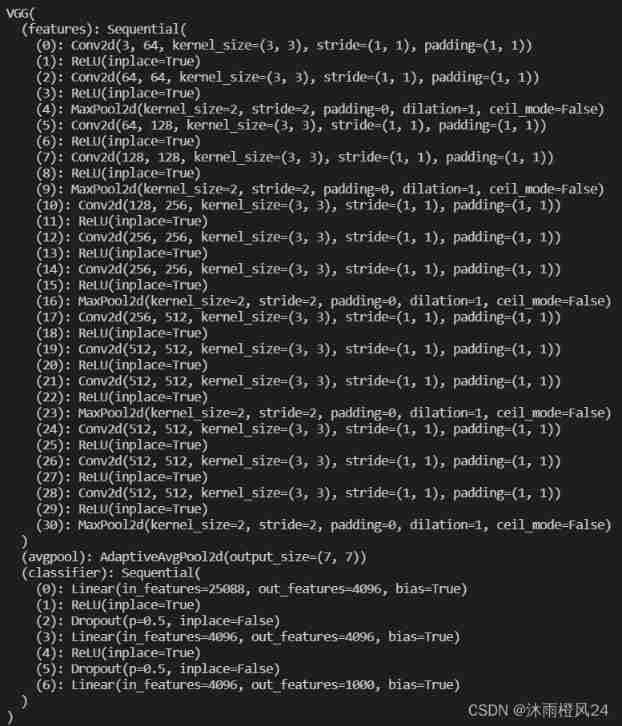
Model modification : If you want to VGG16 A linear layer is added at the end of the network
vgg16_true.classifier.add_module('add_linear', nn.Linear(1000, 10))
If you want to modify the network structure
vgg16_false.classifier[6] = nn.Linear(4096, 10)
8. Save and read the model
Model preservation
There are generally two ways to save models
The first one is : Save the model structure + Model parameters
torch.save(vgg16, "vgg16_method1.pth")The second kind : Save model parameters ( The official recommendation )
torch.save(vgg16.state_dict(), "vgg16_method2.pth")Model reading
There are two ways to save the corresponding model , There are also two ways to read models
The first one is :
model = torch.load("vgg16_method1.pth")Be careful : The first method is to read your own model , You need to import the class of the model from the model file in advance , Otherwise, an error will be reported
from model_save import *The second kind :
vgg16 = torchvision.models.vgg16(pretrained=False)
vgg16.load_state_dict(torch.load("vgg16_method2.pth"))You need to load the model first , Then update the saved model parameters to the network
3、 ... and 、 Complete model training and verification
model.py
# coding=gbk
import torch
from torch import nn
# structure LeNet-5 The Internet
class Model(nn.Module):
def __init__(self):
super(Model,self).__init__()
self.model = nn.Sequential(
nn.Conv2d(in_channels=3,out_channels=6,kernel_size=(5,5),stride=1,padding=0,bias=True),
nn.ReLU(),
nn.MaxPool2d(kernel_size=2),
nn.Conv2d(6,16,5),
nn.ReLU(),
nn.MaxPool2d(2),
nn.Flatten(),
nn.Linear(16*5*5,120),
nn.ReLU(),
nn.Linear(120,84),
nn.ReLU(),
nn.Linear(84,10)
)
def forward(self,x):
x = self.model(x)
return x
# Used to test the correctness of the network structure
if __name__ == '__main__':
model = Model()
input = torch.ones((64,3,32,32))
output = model(input)
print(output.shape)structure LeNet-5 Network structure , Use CIFAR10 Data sets are trained
train.py
# -*-coding:gbk-*-
import torch
from torch import nn, no_grad
import torchvision
from torch.utils.data import DataLoader
from model import *
from torch.utils.tensorboard import SummaryWriter
import time
# Define the training equipment
device = torch.device("cuda" if torch.cuda.is_available() else "cpu")
# Prepare the dataset
train_data = torchvision.datasets.CIFAR10('./data',train=True,transform=torchvision.transforms.ToTensor(),download=True)
test_data = torchvision.datasets.CIFAR10('./data',train=False,transform=torchvision.transforms.ToTensor(),download=True)
train_data_size = len(train_data)
test_data_size = len(test_data)
# Use DataLoader Load data set
train_dataloader = DataLoader(train_data,batch_size=64,shuffle=True)
test_dataloader = DataLoader(test_data,batch_size=64)
# Build a network structure
LeNet = Model()
LeNet.to(device)
# Loss function
loss_fn = nn.CrossEntropyLoss()
loss_fn.to(device)
# Optimizer
lr = 1e-3
optim = torch.optim.SGD(LeNet.parameters(),lr,momentum=0.9)
# Training times
train_step = 0
test_step = 0
# Number of training rounds
epoch = 50
#Tensorboard visualization
writer = SummaryWriter('./log_train')
# Start timing
start_time = time.time()
for i in range(epoch):
print(f'-------------- The first {i+1} Round of training begins --------------')
# Start training
LeNet.train()
for data in train_dataloader:
imgs , targets = data
imgs = imgs.to(device)
targets = targets.to(device)
outputs = LeNet(imgs)
loss = loss_fn(outputs,targets)
optim.zero_grad()
loss.backward()
optim.step()
train_step += 1
if (train_step % 100 == 0):
end_time = time.time()
print(end_time - start_time)
print(f" Training times {train_step},Loss:{loss.item()}")
writer.add_scalar("train_loss",loss.item(),train_step)
# Use the test set to evaluate the training
LeNet.eval()
test_loss = 0
accuracy = 0
with torch.no_grad():
for data in test_dataloader:
imgs , targets = data
imgs = imgs.to(device)
targets = targets.to(device)
outputs = LeNet(imgs)
loss = loss_fn(outputs,targets)
test_loss += loss.item()
accuracy += (outputs.argmax(1) == targets).sum()
print(f" On test set Loss:{test_loss}")
print(f" Test set accuracy Accuracy:{accuracy / test_data_size}")
writer.add_scalar("test_loss",test_loss,test_step)
writer.add_scalar("test_accuracy",accuracy,test_step)
test_step += 1
# Model preservation
torch.save(LeNet,"LeNet.pth")
print(" Model saved ")
writer.close()
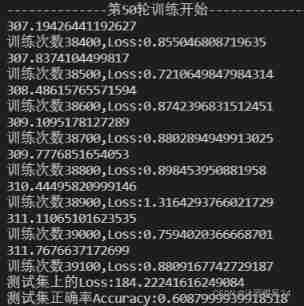
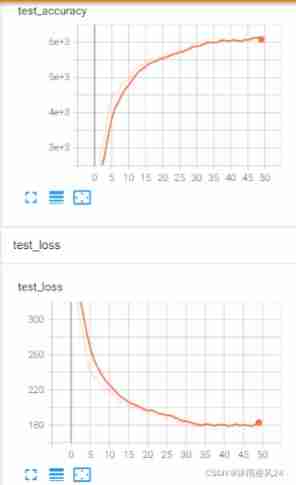
after 50 Round training , The network reached 60.88% The accuracy of
test.py
# -*- coding: gbk -*-
import imp
from PIL import Image
import torch
import torchvision
from model import *
classes = ('plane', 'car', 'bird', 'cat', 'deer', 'dog', 'frog', 'horse', 'ship', 'truck')
#image_path = "dog.jpg"
image_path = "airplane.jpg"
img = Image.open(image_path)
#print(image)
transform = torchvision.transforms.Compose([torchvision.transforms.Resize((32,32)),
torchvision.transforms.ToTensor()])
image = transform(img)
#print(image.shape)
LeNet = torch.load("LeNet.pth",map_location=torch.device("cpu"))
image = torch.reshape(image,(1,3,32,32))
LeNet.eval()
with torch.no_grad():
output = LeNet(image)
#print(output.argmax(1).item())
label = output.argmax(1).item()
print(classes[label])
img.show()Test with pictures of dogs and planes respectively , Finally, the network correctly predicts the category .


![]()
![]()
边栏推荐
猜你喜欢
随机推荐
Reasons for the insecurity of C language standard function scanf
Keil use details -- magic wand
leetcode - 445. 两数相加 II
Shell script
Shell script realizes the reading of serial port and the parsing of message
L298N module use
NTC thermistor application - temperature measurement
Numpy 小坑:维度 (n, 1) 和 维度 (n, ) 数组相加运算后维度变为 (n, n)
STM32 single chip microcomputer - external interrupt
UE pixel stream, come to a "diet pill"!
Chapter 18 using work queue manager (1)
How to write cover letter?
Apaas platform of TOP10 abroad
[three tier architecture]
Search data in geo database
Example 001: the number combination has four numbers: 1, 2, 3, 4. How many three digits can be formed that are different from each other and have no duplicate numbers? How many are each?
Installation and use of libjpeg and ligpng
Charge pump boost principle - this article will give you a simple understanding
Stm32--- systick timer
Example 002: the bonus paid by the "individual income tax calculation" enterprise is based on the profit commission. When the profit (I) is less than or equal to 100000 yuan, the bonus can be increase
